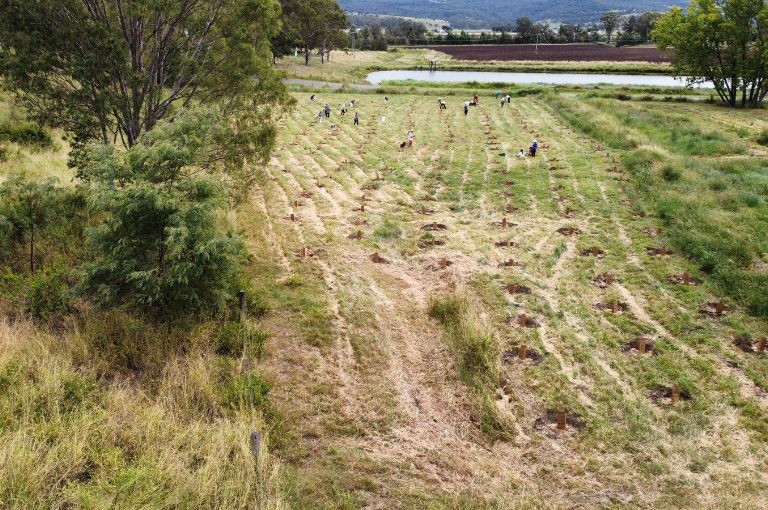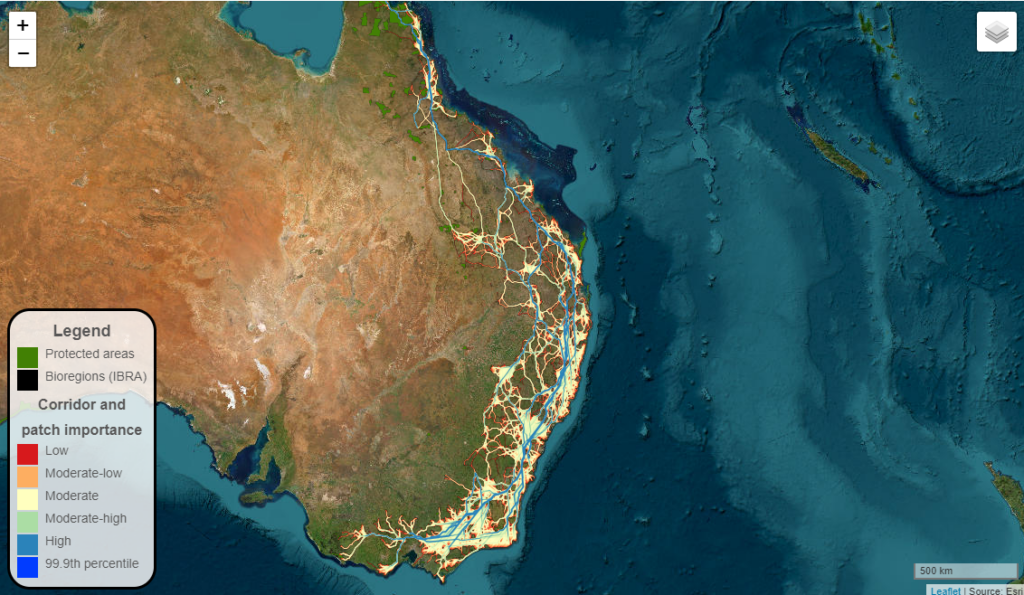
Great Eastern Ranges and Gondwana Link have engaged researchers at Griffith University to develop a new cutting-edge decision support tool to help practitioners plan projects to strengthen vital connections between wildlife habitats.
An interactive map enables users to explore important movement corridors and patches of habitat for a selection of forest-dependent animals in eastern and south-western Australia. These include glossy black-cockatoos, gliding possums and fruit-eating pigeons.
These regions were selected based on them being biodiversity hotspots under immense human pressures.
The research, which is being heralded as a game changer for connectivity conservation, was funded by The Ian Potter Foundation as part of GER’s joint project with Gondwana Link.
The habitat connectivity data can be freely downloaded by practitioners from the State of connectivity website for further analyses.

Lead researcher Dr Patrick Norman says that the connectivity modelling incorporates new forest maturity modelling, environmental variables and human pressures which together created millions of linkages between habitats. The researchers could then identify which movement pathways were the most important.
“The mapping tool was developed to help practitioners make critical decisions when designing conservation projects. It can be used to help identify the optimal connectivity pathways – the easiest path for species to move between habitats – connectivity bottlenecks and important patches of isolated habitat where conservation actions should be focused to get the maximum benefit for wildlife.”
“Re-establishing, strengthening and protecting natural connections between habitats is critical for mitigating the impacts of habitat fragmentation, biodiversity loss and climate change.”
“Without good connectivity between habitats, animals will be unable to adapt to climate change by shifting in response to changing conditions, food resources and climate disasters.”

The researchers also discovered that while 53% of important rainforest corridors are protected, big chunks of habitat on both the east coast and south-western WA are located outside of protected areas like national parks.
Fellow researcher and GER Board member, Professor Brendan Mackey, says that the new mapping advances the connectivity and spatial analyses work done by the organisation a decade ago.
“Australia is behind the rest of the world in implementing and investing in connectivity conservation at the vast scale needed. The new platform serves as an essential guide for policy, planning and much-needed investment in on-ground restoration work and protection of crucial habitats.”
Prof Mackey says that as well as aiding wildlife conservation, connectivity conservation also contributes to climate change mitigation as the protected and restored forest areas sequester and retain significant carbon stocks.
Patrick Norman and Brendan Mackey’s research paper, ‘A decision support tool for habitat connectivity in Australia’, can be viewed on the Pacific Conservation Biology journal at www.publish.csiro.au/PC/PC24008.



 Media release
Media release